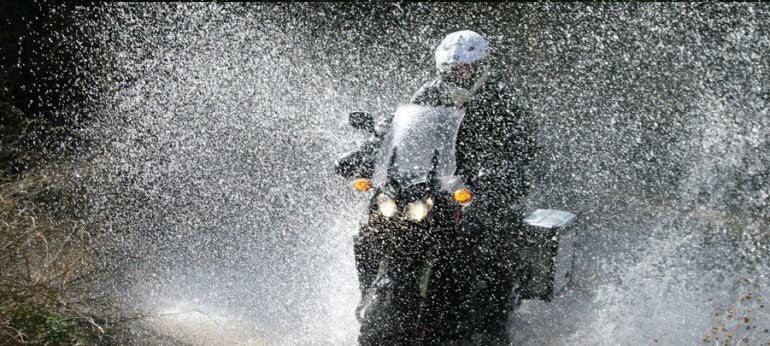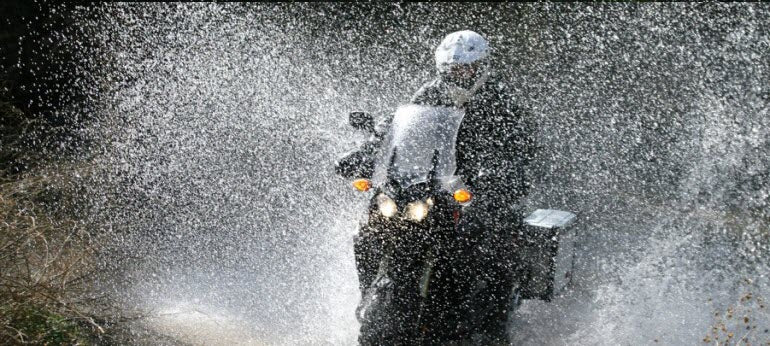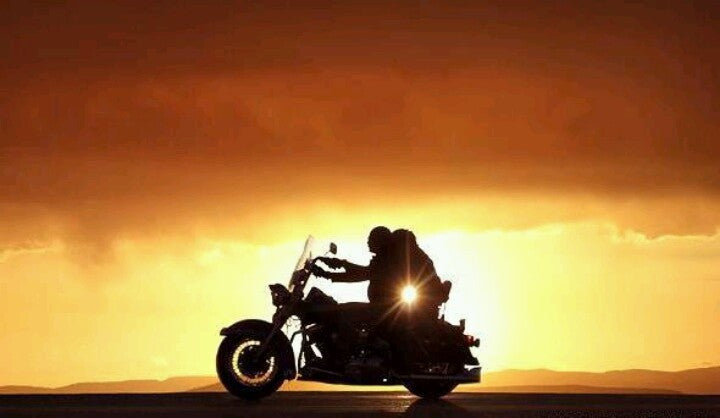
HNP’s Top Safety Tips for Riding in The Rain

The Rider
- The most important thing is to remain calm if you're the kind who gets nervous riding in the rain. Keep calm and ride on!
- All the safety rules which apply for night time riding kick in here, so make sure that your headlamps are on, you are wearing Hi-Viz/reflective clothing and ride only as fast as your reaction time and braking abilities in rain will permit.
- It is of utmost importance to ride smoothly. Braking, changing gears and accelerating - they all need to be executed smoothly.
- If you are starting out to ride in rain, spend a little extra time in the pre ride T-CLOCS check. Tyre condition, brake pads, electricals are the areas to watch out for.
- Always ride in the rain with your visor on. Keep your visor in good condition, and a good visor cleaning/anti fogging/anti rain kit handy.
- A good quality set of rain riding gear is very helpful in keeping you dry and confortable and therefore in keeping your attention focused on the road.
One final point is about the visibility. A common trap which riders fall in is the misconception that visibility is about the distance they can see clearly as they ride.
To paraphrase a sentence from the world of relationships –
“It’s not about you, it’s about the other person”
Visibility limit is always about how well others see you on the road. It’s never a good idea to bet on other’s vision capabilities.
Visibility during rain can be a dynamic variable – slow down or stop if it gets below your comfort levels. NEVER attempt to ride blind.
The Machine
- The most important thing here is the pre ride check – make sure that the tyres, brake pads, & electricals are fully functional as you ride out in the rain. Always keep your headlamps on. The braking distance is a combination of tyre and brake condition, the surface and your own reaction time – remember that in wet weather all three are significantly affected, so always ride within the permissible limits.
- Some motorcycles may perform differently in wet conditions that others – always know the capabilities and limits of your machine.
The Terrain
- The most important aspect to remember is that the first rain of the season or the first 15 minutes of a downpour are the most dangerous. An initial downpour is not only more acidic in nature – harming the metal, paints and plastics on your bike, it also can move debris on the road.
- Always watch out for rainbow coloured oil slicks on the road – they become a lot more slippery when mixed with rain water.
- Steer away from those white or yellow coloured road marking signs – they are at their deadliest when wet.
- Watch out for potholes - now in the form of puddles.
- Last, but not the least, watch out for traffic that may have stopped moving but without offering any lights or indicators.
So that's it, simple pointers to watch out for to make your rain riding experience a safe and enjoyable one. Have fun!

